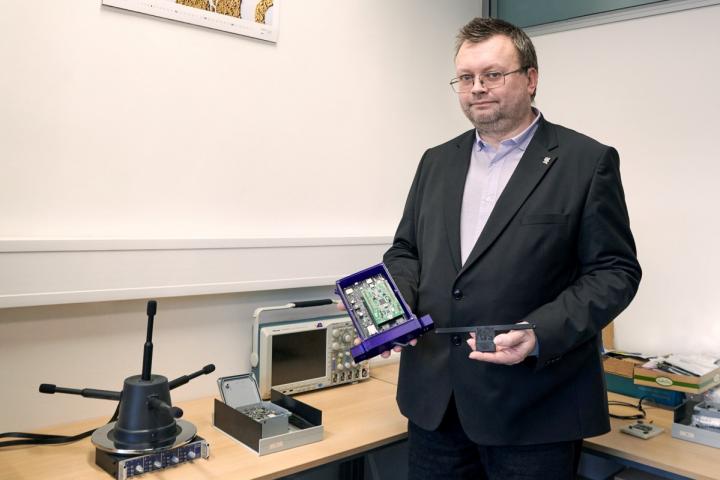
The research team of the Department of Measurement at the CTU FEE has been working on acoustic gunshot detection since 2016. The fourth, latest version of the detector under development consists of separate measurement units, each unit containing two microphones and constantly monitoring the surroundings, and a remote server where, in the event of a possible threat, the source of the event is identified and located.
How does the technology work? "The first step is to decide if it was a gunshot or a harmless sound. If it was a gunshot, the unit sends the recorded signs of the event, along with its current location and the direction the gunfire is coming from, to a remote server that can assess what type of weapon is being fired and what calibre it is. All of this is done autonomously without human intervention within a few seconds," describes the process Prof. Jan Holub, head of the Department of Measurement at FEE CTU.
The researchers use artificial intelligence to determine the type and calibre of the weapon, which works with a large database of records of firing from different types of weapons and ammunition. "We have collected shot samples over the seven years we have been working on the project, both at shooting ranges and in urban developments or other environments. This database of acoustic signals has become the basis for advanced methods of classification of gunshots using neural networks and machine learning tools," explains Prof. Holub the main advantage of the technology under development.
"There are more acoustic gunfire detection devices in the world, but most of them cannot distinguish the type of weapon. Thanks to the involvement of artificial intelligence, we are the furthest away in terms of the ability to determine the type of weapon," adds Dr Jakub Svatoš, who is working with Prof. Holub on the development of the technology.
Immediate information about the time and place of shooting from a certain type of weapon in monitored public places can be crucial for timely and effective intervention of the Police of the Czech Republic or other forces under the Ministry of the Interior of the Czech Republic. It is the state security forces or municipal authorities that will be the primary users of the developed system, e.g. within the Smart Cities concept.
In addition to the fact that the developed acoustic detection system can provide essential information about the use of firearms in public, Prof. Jan Holub sees the benefit of the developed system in the psychological deterrence of a potential shooter.
Academics make their know-how available
The acoustic gunfire detection system is in the prototype stage and its authors do not plan to be directly involved in its production. "As academics, we do not have the capacity, logistics or organizational background to manufacture, install, and guarantee a certain level of service, but we are ready to provide our know-how to a manufacturer who does. We would like to see the results of our research put into practice in the form of a concrete product, especially as this topic has become topical at the end of the year. The results of our publications in scientific journals confirm that we have succeeded in developing a technology that is unique at the moment," concludes Prof. Jan Holub.
The research team from FEE CTU is in contact with the Office for Naval Research, an agency that coordinates and sponsors research activities and technological development of the United States Navy and Marine Corps. The system has been presented to them, and the ONR-G representatives are interested in its features.